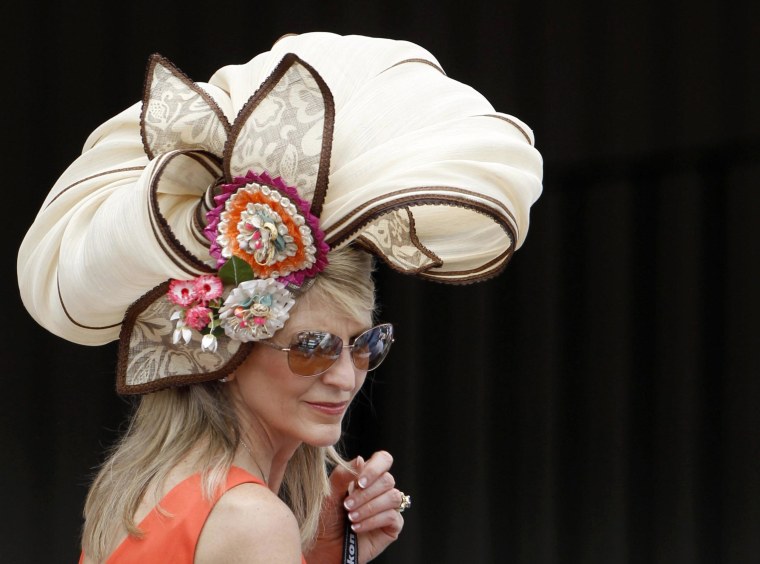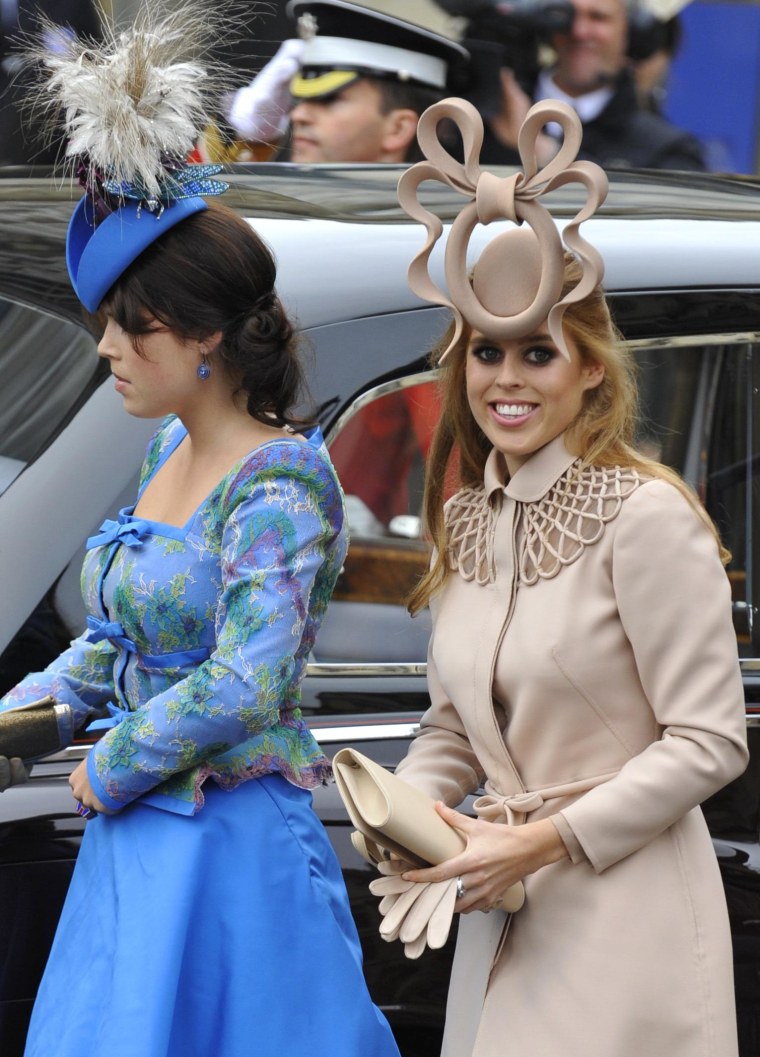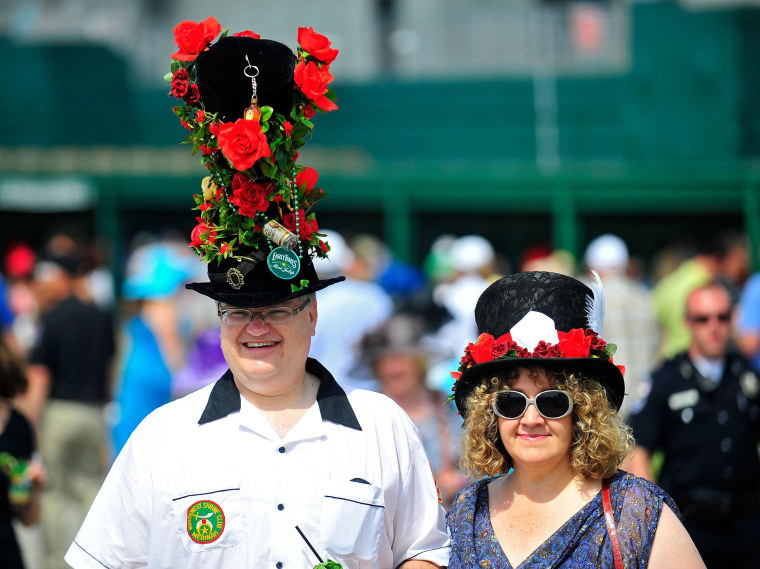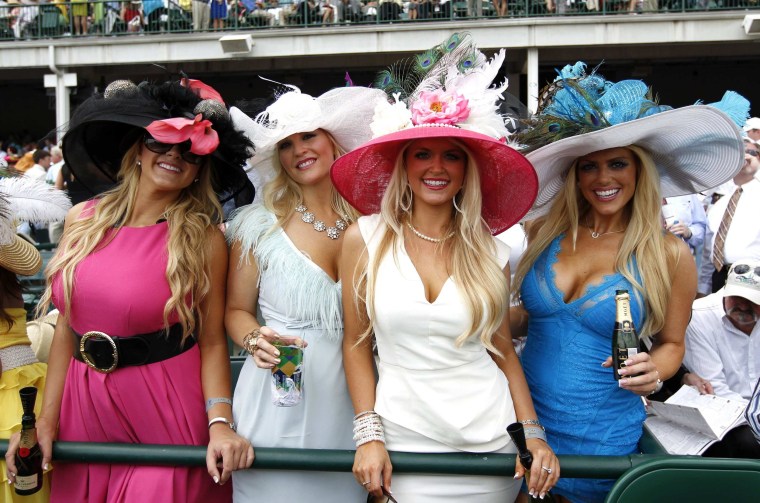It's hard to put a price on style.
It's with that attitude that men and women attending the Kentucky Derby — or simply watching it among friends at a viewing party — are willing to spend hundreds, even thousands of dollars, to land the perfect hat.

But the annual event has implications for more than just the fashion set. For some milliners — largely independent businesses that design and manufacture hats — the annual Run for the Roses is the backbone of their business.
"It's an all-out occasion," said Jenny Pfanenstiel, a couture milliner and owner of Forme Millinery in Louisville, Ky. "It's not just, 'Oh, let me go get a hat and match it to something I have in my closet.'"
According to the 2013 Accessories Census, compiled by Accessories Magazine in collaboration with The NPD Group research firm, women's hats and caps saw a 16 percent increase in sales last year. That drove the category to an estimated $300 million in retail sales.
Pfanenstiel, who has designed hats for Michelle Obama and Oprah Winfrey, said her shop sells about 150 hats for The Derby — accounting for about 40 percent of her annual business. Prices range from $300 or $400 for a style from her already-made collection to custom hats that typically go for between $500 and $1,000.
Best known for her $650 corset hat, a topper made from jinsin (a form of bamboo native to Australia) and adorned with pleated horse hair, Pfanenstiel said her clientele often are women in their mid-40s to mid-60s. It's typical for them to purchase their hats before the rest of their Derby outfit, and they absolutely do not want to see the same hat on somebody else.
While traditional big brim hats will never go out of style at Churchill Downs, Pfanenstiel said fascinators — smaller, detailed pieces that are more perched on the head than resting on it — have become more popular after Kate Middleton and Prince William's wedding three years ago. There, Princesses Beatrice and Eugenie of York made international headlines with their over-the-top fascinators, while Spice Girl-turned-fashion designer Victoria Beckham donned a more subdued version of the topper.

Since then, Middleton — whose styles are often snatched up by idolizing British and American consumers alike — has also been photographed wearing various versions of the headpiece.
"I was doing fascinators before the royal wedding, but now everybody knows what that word is," Pfanenstiel said. "Kate Middleton has definitely brought that style to the norm."
The trend has also carried over to New York City shop Suzanne Couture Millinery. Suzanne Newman, who has been crafting hats for the Kentucky Derby for 28 years, said her store has seen a budding interest in what she called a hatinator — a midsize hybrid between the smaller fascinator and the traditional brimmed hat.
After the royal wedding, Newman said her business doubled, and she now makes several hundred each year. That includes the 60 hats she had created for this year's Derby as of Saturday night.
Newman makes only custom hats, which typically range from $400 to $2,000. The most expensive hat she ever created, sold at the top of that range, was a brim hat with deeply dyed fuchsia, orange and red vulture feathers, each of which took a few hours to soak up the color.
"It was a very stunningly beautiful hat," she said, "but it was very time-consuming."
Adding to the bill is the Kentucky Oaks, The Derby's lesser-known sister race that is held the day before the main event. Many of Newman's clients have hats made for both The Derby and the Oaks, the latter of which encourages guests to wear pink in support of breast cancer awareness.
The hat trend isn't exclusive to women. Chicago-based millinery Optimo creates unisex straw and felt hats that are typically worn by men to the race. Its felt hats can run fashion-savvy men between $650 and $1,000, while its straw hats range from $400 to $20,000, depending on how fine the weave is.

Though the hat-maker's general manager, Tiffani Bell, said she is unsure how many hats the shop makes for the event each year, she said customers often fly in specifically to buy a hat for events like The Derby.
"Last year the most memorable couple came in [for] Kentucky Derby and Jazz Fest," Bell said. "They couldn't decide so they bought like seven hats."
Ann Sommerlath Pizzi, a corporate communications executive in Manhattan who has attended The Derby about 10 times, said she's learned over the years the importance of buying her hat from a local shop, or shipping it ahead of time. Because many of the flights from New York City to Louisville and Cincinnati involve smaller planes, there isn't enough room in the overhead storage bins to fit a hat box.
As such, she gets her hats made each year at Louisville's Dee's Crafts, which said it sells about 95 percent of its 4,000 hats each year in the six weeks before The Derby.
Last year, she sent the shop a picture of her off-white dress with splashes of mustard, plum and teal, which they used to create a traditional brim hat ornamented with feathers for about $300.
But there was another casualty of her learning curve. Sommerlath Pizzi said she once made the mistake of ordering her hat online and ended up spending $500 on a large "sombrero" that made her 5-feet-10-inch frame tower over the men in her party.
"I had to turn sideways to get into the bathroom stall," she said.
Despite missteps, Sommerlath Pizzi and women across the country continue to view the horse race as the perfect reason to spend big bucks on big hats — even if they're not attending the event.
"The first few years I was very traditional and I played it safe," Sommerlath Pizzi said. "Then you sort of realize the hat is the thing."
